Seal Item Number: N1.266 from the MOA: University of British Columbia
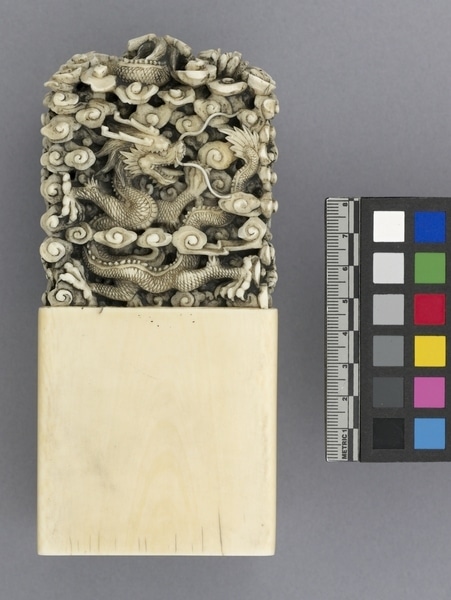
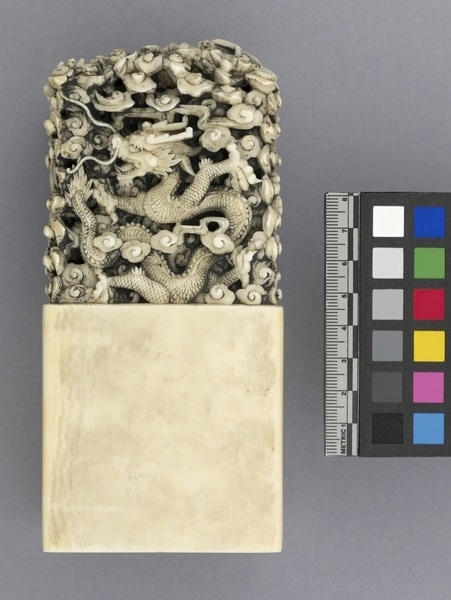
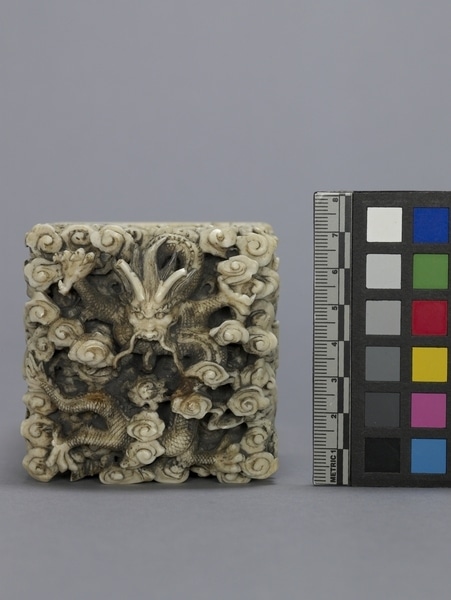
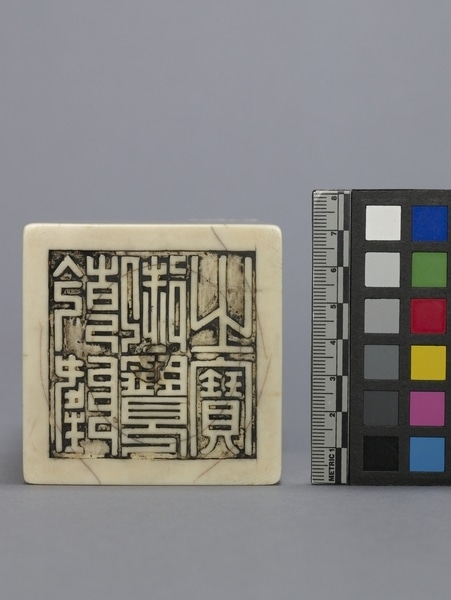
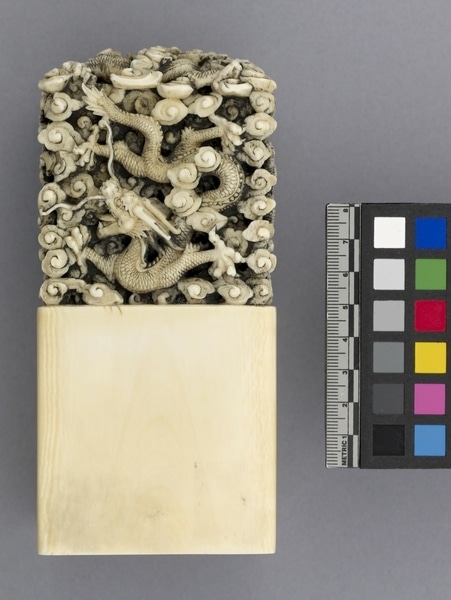
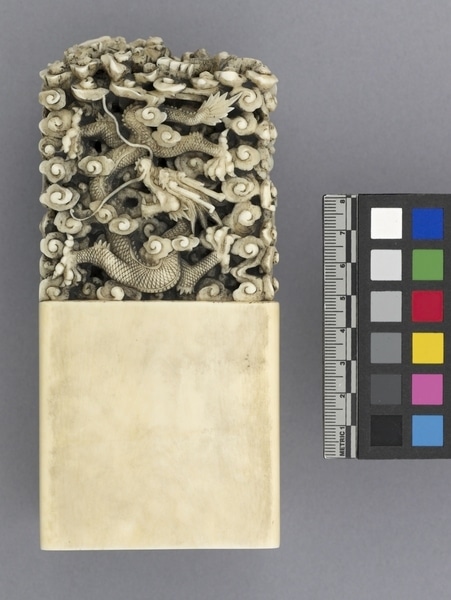
Description
Seal carved from one piece of ivory with a square base. Carved with five-clawed dragons. Clouds surround the dragons. All are carved into the upper portion of the seal in the recessed areas of the carving. Six Chinese characters, 乾隆御覽之寶 (Qianlong yulan zhi bao; treasure admired by his Majesty the Qianlong Emperor) carved into the underside of the base.
History Of Use
The Qianlong emperor (乾隆帝; 1711–99) was an artist, a poet, and an avid collector of artworks who embraced the arts of other cultures. Seals were an important marker of authority and identity in imperial China. Every emperor and official used both official seals bearing his title and individual seals bearing his name. Imperial seals from this period were produced from various materials, including jade, bronze, crystal, amber, ivory, and bamboo. The art of seal engraving dates back to 1600 BCE, and it was added to the UNESCO Intangible Cultural Heritage list in 2009. Seal imprints were affixed to documents as a personal signature or sign of authority as well as to mark the authorship or ownership of artworks such as calligraphies or paintings; this particular seal was designed to mark works from Qianlong’s collection. Seals are often considered artworks in their own right and are sought after by collectors.
Iconographic Meaning
The five-clawed dragons are symbols of the emperor. This ivory seal may be one of approximately eighteen hundred seals commissioned by the Qianlong emperor (乾隆帝; 1711–99) of the Qing dynasty.
Item History
- Made in China between 1735 and 1796
- Collected by Ping-Ti Ho
- Owned by Antique Galleries before October 15, 1960
- Received from Antique Galleries (Seller) and Leon & Thea Koerner Foundation (Funding source) on October 15, 1960
What
Who
- Culture
- Chinese
- Field Collector
- Ping-Ti Ho
- Previous Owner
- Antique Galleries
- Received from
- Antique Galleries (Seller) and Leon & Thea Koerner Foundation (Funding source)
Where
- Holding Institution
- MOA: University of British Columbia
- Made in
- China
When
- Creation Date
- between 1735 and 1796
- Ownership Date
- before October 15, 1960
- Acquisition Date
- on October 15, 1960
Other
- Condition
- good
- Current Location
- Case 76
- Accession Number
- 0036/0003